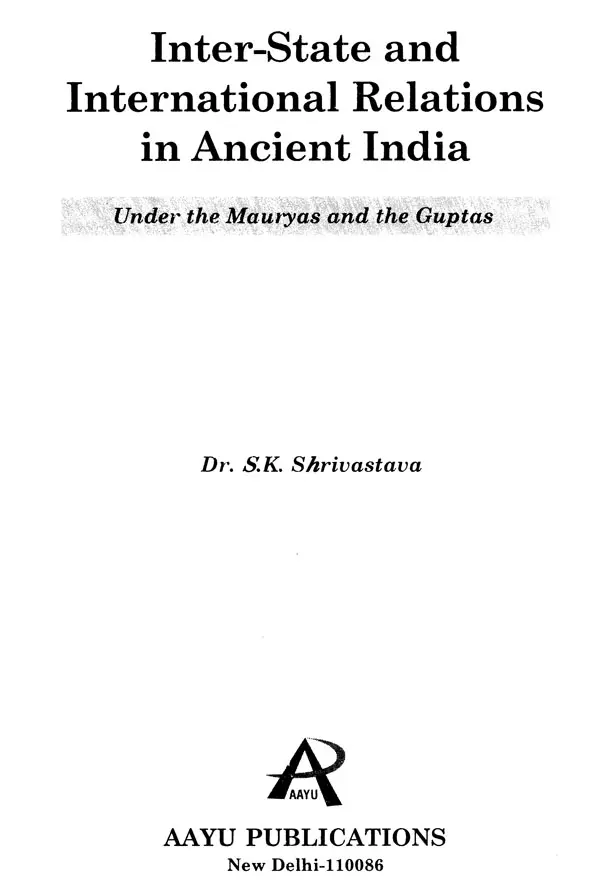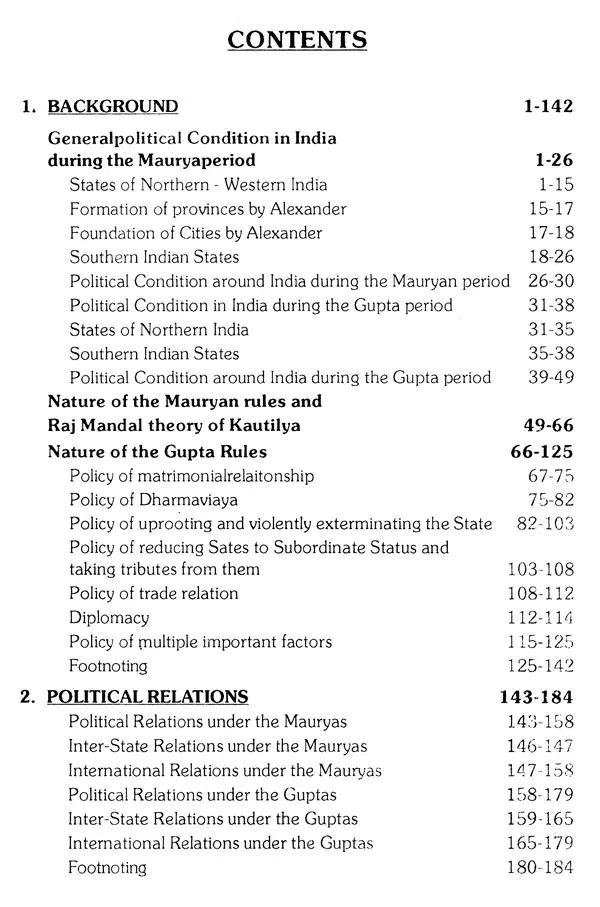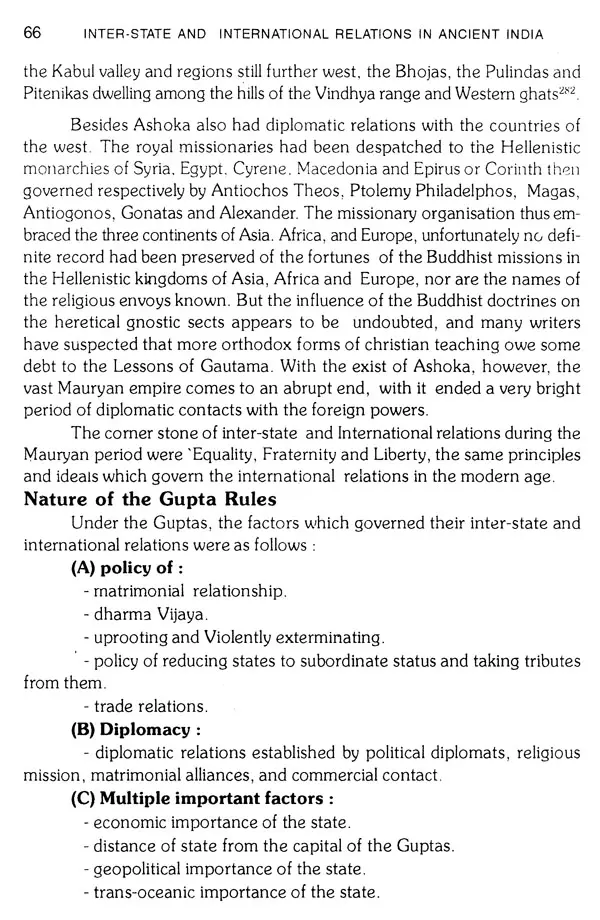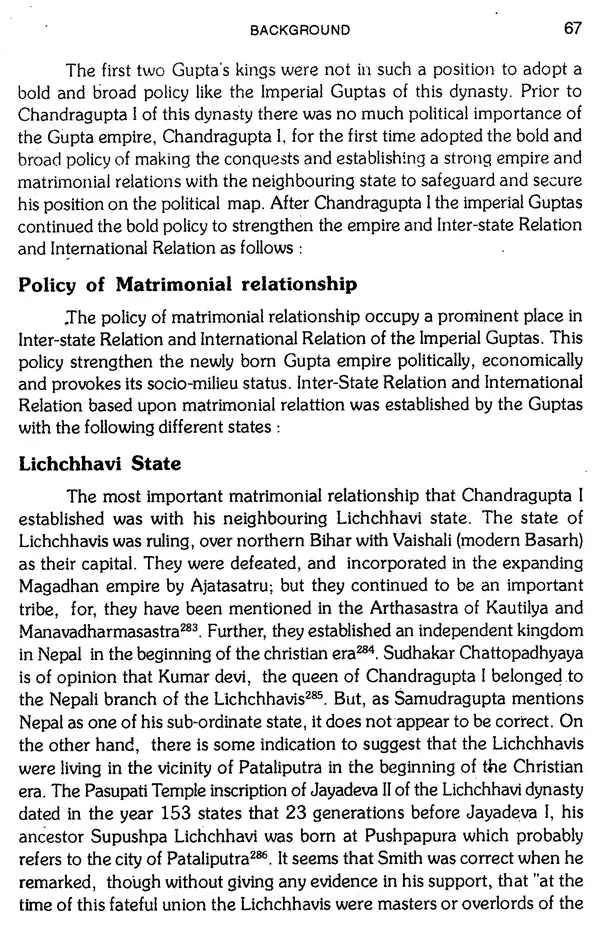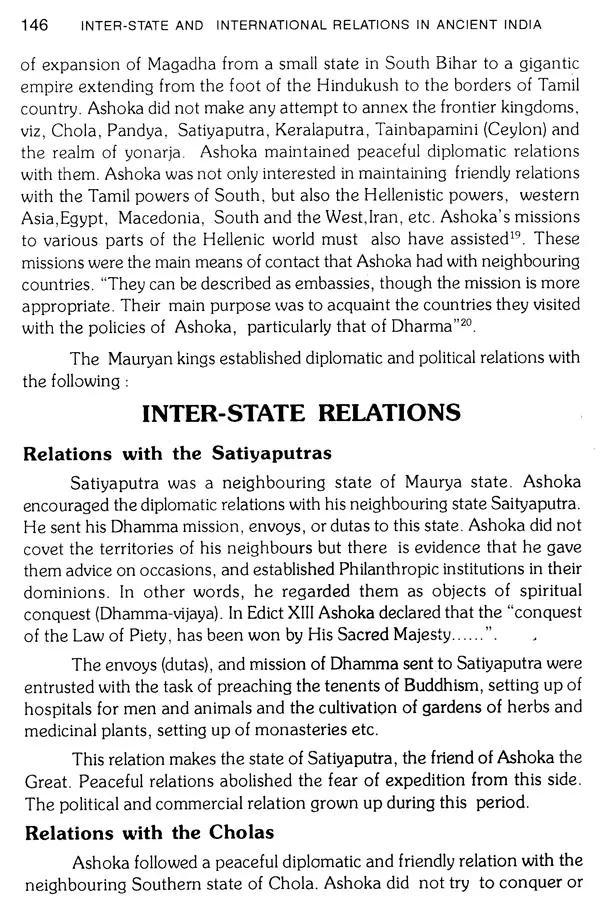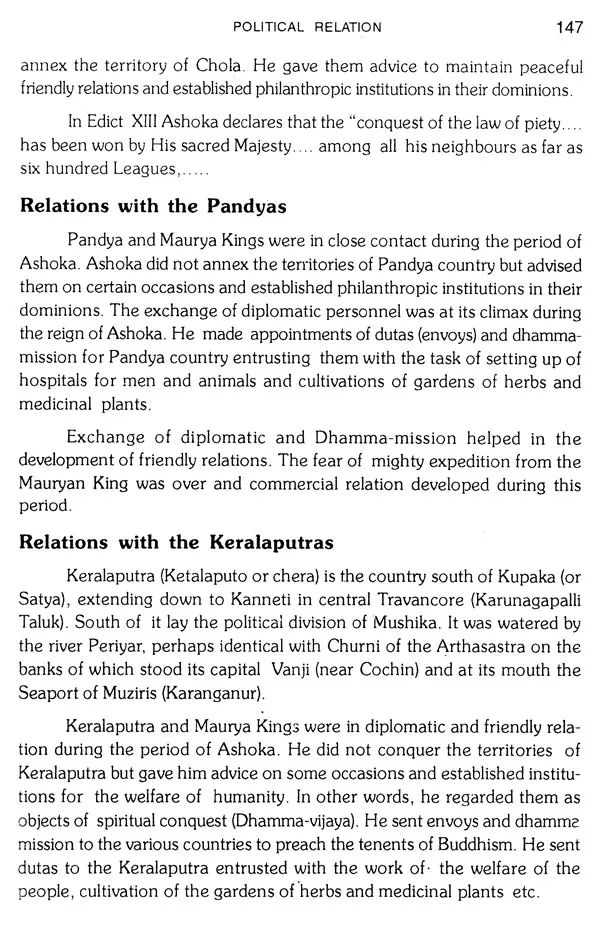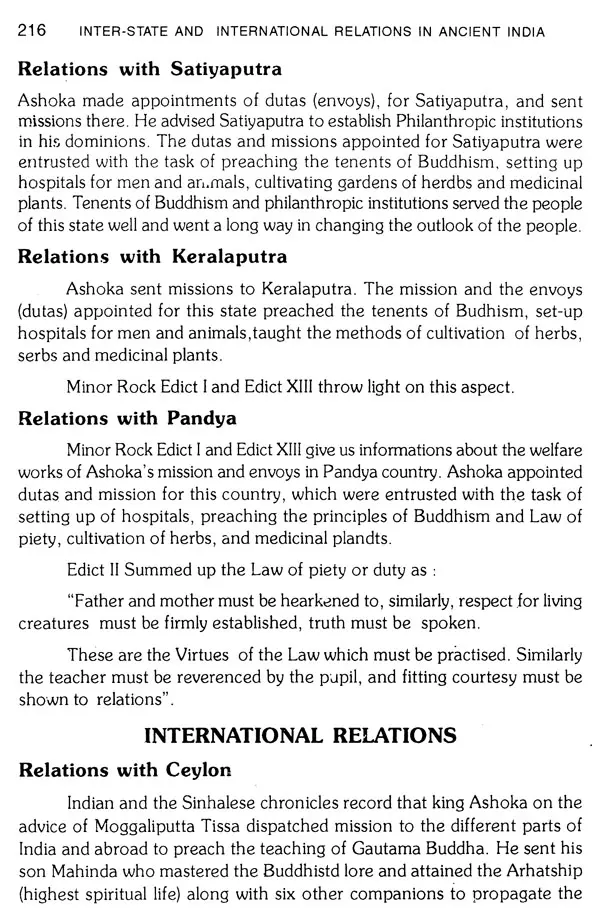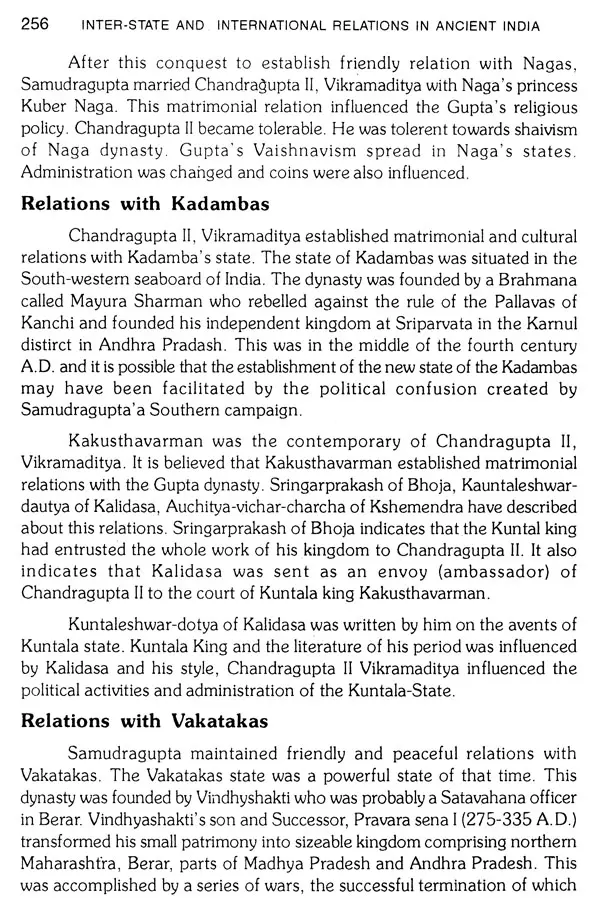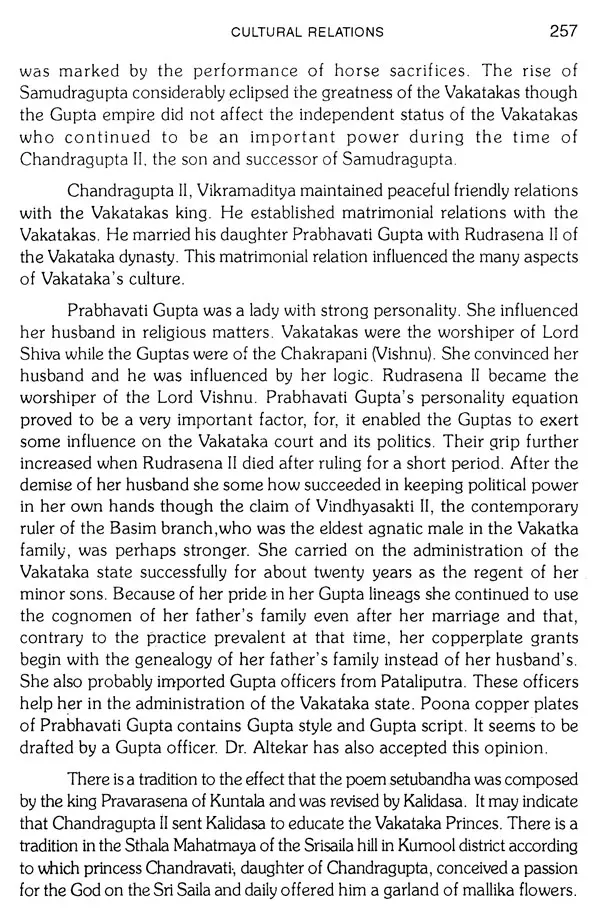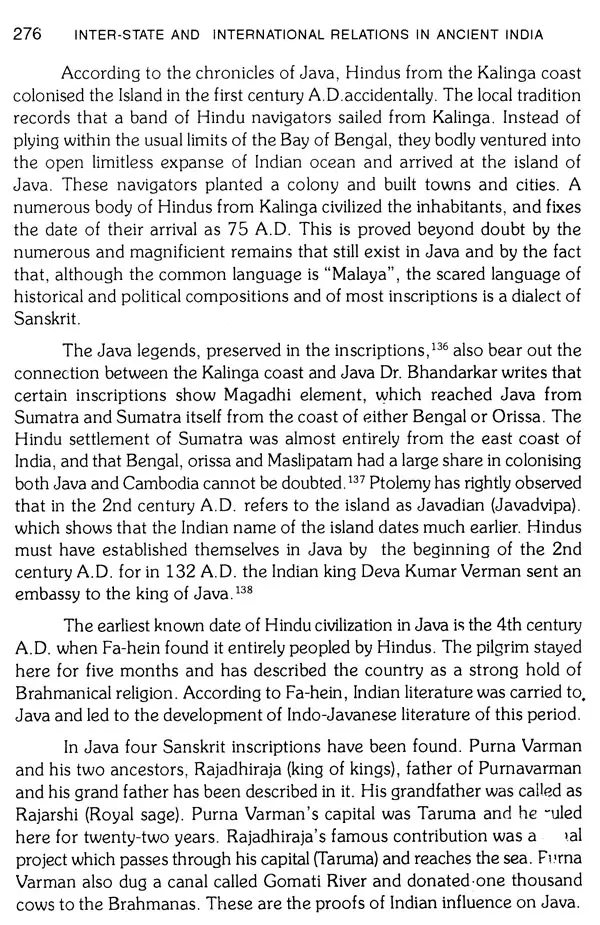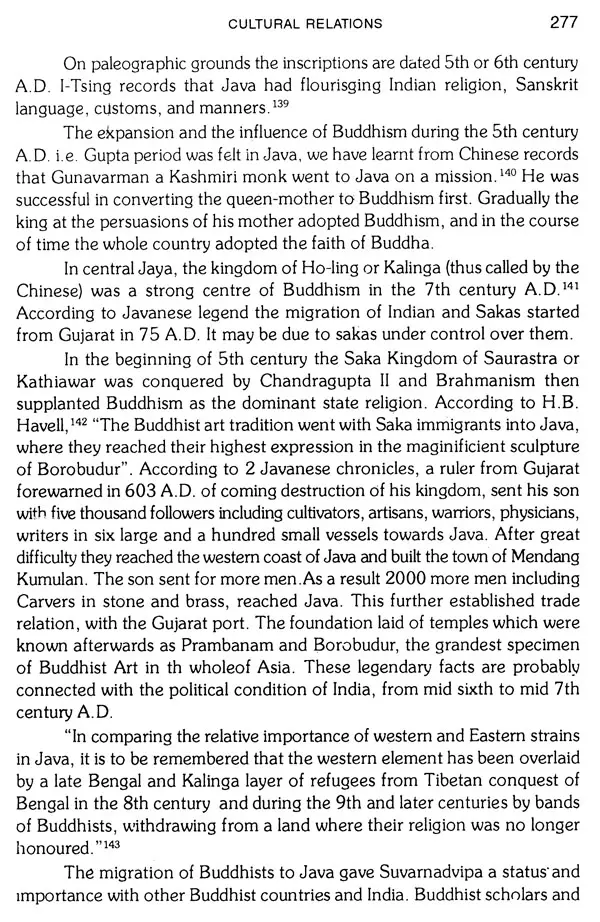
Inter-State and International Relations in Ancient India (Under the Mauryas and the Guptas)
Book Specification
| Item Code: | UAP146 |
| Author: | S.K Shrivastava |
| Publisher: | Aayu Publications, New Delhi |
| Language: | English |
| Edition: | 2015 |
| ISBN: | 9788193019023 |
| Pages: | 312 |
| Cover: | HARDCOVER |
| Other Details | 9.00 X 6.00 inch |
| Weight | 540 gm |
Book Description
This is a strikingly work in the field of untouched sphere of Ancient Indian History, Political, economic, social and religious aspects of Ancient India have been discussed and studied by various authors. Like H.G. Rawlinson, H.L.. Chatterjee, N.N. Law, S.K. Das, H. Trivedi, S.K. Maity etc. but every aspect of the title has not yet been focused.
The present work is a full fledged study of Interstate and International Relation in Ancient India during the periods of the Mauryas and the Guptas.
The relations established by the imperial Mauryas and the Guptas in India beyond the territories of the both empires with independent states of India have been termed as Interstate Relations. Each and every types of such relations as political, diplomatic, trade, cultural and their impacts have been discussed on the basis of literary and archaeological Sources.
International relations established during the period around and abroad India have been discussed on the basis of available literary and archaeological sources. Every kinds and aspects of International relations and its impacts in the spheres of politics, trades, industries, colonisation, cultural contacts as in literature, drama, dance, art and architecture, science and medicines, religion and war, administration and numismatics have been approached with a scientific view point and comparative study. Nature and basis of Interstate and International relations and guiding factors of the both relations have been openly and clearly discussed. I hope to book will be appreciated by the scholars.
Dr. Shailendra Kumar Shrivastava son of Shri Shambhu Sharan Shrivastava born on 1st April 1954 at village Kherai, P.O. Kherai, District Siwan, Bihar received his early education in Ranchi with his parent and higher education at Muzaffarpur as a student of Bihar University in the kind kiss and care of beloved uncle Dr. Vimalesh Kumar Shrivastava. He did B.A. (Hons.) and M.A. from Bihar University, Muzaffarpur. He has been awarded Ph. D. Degree from Bihar University, Muzaffarpur in 1990.
Dr. Shrivastava is working as a Reader in History at Raja Singh College, Siwan. His field of interest and work is Ancient India and International Relations in Ancient India. He has scholarly presented a book on Aryan problems named "Arya Akraman Kari Ya Mool Nivasi?" in 1994. He is also an organiser of various state and University seminars. At the same time he has also presented several papers in the seminars at various places. Several articles, research papers and stories are published in research magazines and daily news papers.
"Interstate and International Relations in Ancient India" is a book, which deals with interstate and international relations of India during the reign of the Mauryas and Guptas. The Mauryan and the Gupta periods are especially significant in the history of ancient India. This period is not only known for its political, social and cultural history, but also for its remarkable development of relations established by India with the out side world during the same period. The objective of the book is, therefore to make a comprehensive study of India's interstate and international relations during the Mauryan and Gupta periods.
Dr. Srivastava. has given a very vivid picture of the general political condition prevailing in and around India and its interstate and international relations, on the eve of the Mauryan and the Gupta periods.
On the eve of Alexander's invasion and prior to the establishment of Mauryan Empire, northern India comprised of a number of states such as those under the Aspasian (Alisang-Kunar-Bajaur-valley), Guraeans, Assakenos, Peukelaotis, and Magadh of Nandas. Besides these, twelve provinces and a large number of cities like those of Alexandria, Nikaia etc. also existed. Southern India comprised of important states like those under the Pandyas, the Satiyaputras, the Keralaputras, the Kalingas, the Andhras, and the Cholas. Outside India, Greece, Ceylon, Burma (Suvarnabhumi), Siam (Thailand), Nepal, Khotan, Syria, Egypt, Cyrene. Macedonia and Epirus were the important countries which had relations with India.
Prior to the Gupta Period Northern India consisted of states under the Kusanas, Sakas, Nagas, Maukharis, Yaudheyas, Arjunayanas, Lichchhavi etc. Southern India comprised the states under the Pallavas. Kadambas, Kosala, Mahakantara and Kusthalapura. Beyond India, China, Ceylon, Rome the state of Daivaputra-Shahi-Shahanu-Shahi, Burma Indonesia, and Cambodia were the other countries with which the Guptas established their relations.
The cardinal principle, which governed the inter-state and international relations during the Mauryan period, was the Mandal theory of Kautilya. Matrimony was also an important mode of establishing relationships with other states.
This is an attempt at a full-fledged study of India's Interstate and International relations in Ancient India during the Maurya and the Gupta periods The attempt has its justification in the fact that, notwithstanding the availability of quite a few works on the political, social and cultural aspects of the ancient Indian history of that period, the need remained for a comprehensive historical study of India's Inter-state and International relations under the Mauryas and the Guptas. It has its use in that it may help the understanding of the true nature of relationship that existed among the various Indian states on one hand, and between India and the outside world on the other.
The Mauryas and the Guptas form very important periods in the history of ancient India. Their importance lies not only in their political. social and cultural history, but also in the development of India's Inter-state and international relations of the time. The latter aspect rather makes a very interesting study of the period Inter-state relations during the period in question were prompted mainly by a desire of the rulers for recognition of their political supremacy by other states, whereas the International relations were prompted chiefly by economic needs and cultural considerations. These relationships had important bearing upon the subsequent course of India's political and cultural history.
Apart from the Introduction, the first chapter of the study, which serves as a background, is a survey of the general political conditions prevailing in and around India on the eve of the Maurya and the Gupta periods, and also a survey of the nature of the Maurya and the Gupta rules. The second chapter is a comprehensive study of the political nature of India's inter-state and intemational relations. The third chapter is a study of the economic aspect of those relationships. The fourth one has made a survey of cultural relationship. In the fifth chapter, a conclusion has been drawn. The dissertation has sought to follow a multi dimensional approach. The approach is primarily historical, secondarily analytical and tertiarily evaluative.
The method of investigation is based on the pursuit of relevant literature, journals, and relevant academic publications. Sources gone through for rel evant facts include the literary evidences, archaeological remains, modern works as well as evidences of structural and sculptural developments through cul tural contacts.
Book's Contents and Sample Pages
